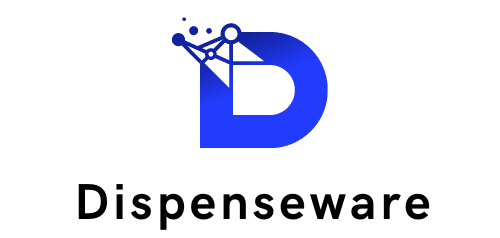In our increasingly globalized world, the ability to communicate in multiple languages is an essential asset for businesses. This is where language translation comes in, serving as a vital tool for companies to connect with international clients, customers, and partners. But traditional human-powered translation has its limitations. Enter Artificial Intelligence (AI). The advent of AI has created a paradigm shift in the realm of language translation, with fantastic innovations and technological advancements. This article delves into how AI can enhance real-time translation for businesses, focusing on the machine-powered tools and automated services that harness cutting-edge technology to break language barriers and boost businesses’ global reach.
The Power of AI in Language Translation
Artificial Intelligence is revolutionizing the translation industry in profound ways, offering efficient, robust, and real-time language translation solutions. AI-powered tools enable instant translations, a feat that is difficult to achieve with human translators alone. These tools employ machine learning algorithms and vast data resources to provide accurate and contextually correct translations. But how exactly does AI work in the language translation sphere?
A lire aussi : How is ai transforming the approach to cybersecurity in businesses?
AI-powered translation tools incorporate a technology known as Neural Machine Translation (NMT). This technology leverages deep learning, a subset of machine learning, to train translation models. These models are fed with vast amounts of bilingual text data, enabling them to learn language patterns, grammar rules, and cultural nuances over time. This learning process ensures a high level of accuracy and naturalness in translations, making them almost indistinguishable from human translations.
Moreover, AI tools can handle multiple languages simultaneously, enabling businesses to communicate with diverse global audiences in real time. These tools can also work round the clock, processing thousands of translations per minute without succumbing to fatigue or errors inherent in human translators.
A lire également : What are the opportunities for ai in customized health and wellness programs?
Real-Time Translation: A Game-changer for Businesses
In a world where time is money, the ability to translate languages in real time can be a game-changer for businesses. AI-powered translation tools provide immediate translations, eliminating the delay caused by human translation processes. This real-time service is especially beneficial in live interactions such as video conferencing, customer support, and social media engagement, where instant communication is essential.
Real-time translation powered by AI can enhance businesses’ customer service. For instance, customer queries fielded in various languages can be instantly translated, enabling customer service representatives to understand and address issues promptly. This capability enhances customer satisfaction, fosters loyalty, and can lead to increased revenue.
Moreover, AI-powered real-time translation can also facilitate seamless international business meetings. It can translate conversations on the fly, allowing all participants to follow the proceedings in their preferred language. This capability enhances communication and understanding, fostering successful business partnerships and deals.
The Role of AI in Content Localization
Localization, the process of adapting content to a specific locale or market, is another area where AI can significant benefits. AI-powered tools can translate and localize content simultaneously, considering the cultural nuances, idioms, and local expressions of the target audience. This capability ensures that the content resonates with local audiences, enhancing its impact and efficacy.
Moreover, AI-powered localization tools can handle large volumes of content, from websites to product catalogs, with remarkable speed and efficiency. These tools can also continuously learn and improve from the feedback and corrections made by human translators, resulting in enhanced accuracy and naturalness in localized content.
Cutting Through the Noise: The Accuracy of AI Translations
While AI has made significant strides in language translation, there are concerns about the accuracy of machine translations. However, recent advancements in machine learning and access to vast data resources have greatly improved the accuracy of AI-powered translations.
AI translation tools learn from their mistakes and improve over time. When a mistake is corrected by a human translator, the tool incorporates this correction into its data, refining its future translations. Moreover, with the advent of big data, AI tools can access more diverse and extensive language resources, enhancing the accuracy and context of their translations.
While AI may not yet match the nuanced understanding of language by human translators, it is fast closing the gap. Moreover, the combination of human translators and AI tools, known as hybrid translation, can leverage the strengths of both to provide highly accurate and efficient translations.
Conclusion
In a nutshell, AI offers immense potential in enhancing real-time language translation for businesses. From instant translations to content localization and improved accuracy, AI-powered tools provide a host of benefits that can propel businesses towards global success. As technology advances, we can anticipate even more sophisticated and efficient AI-powered translation solutions, further breaking down language barriers and fostering global communication and connectivity.
AI and the Future of High Quality Language Translation
In recent years, artificial intelligence has made impressive strides in the realm of language translation, aiding businesses in bridging language barriers and connecting with a wider global audience. Looking forward, there are strong indications that AI will play an even more integral role in shaping the future of high quality language translation.
Advancements in machine learning technology will continue to improve machine translation. Machine learning is the key technology underpinning AI-powered translation tools. As machine learning algorithms become more sophisticated, AI-powered translation tools are expected to provide even more precise and nuanced translations.
The future of real-time language translation also looks bright with AI. With the rapid pace of business interactions, the demand for real-time translation services is increasing exponentially. AI is poised to meet this demand, enabling seamless, instant communication in multiple languages.
In addition, the continued growth of big data will provide AI with even more resources to enhance its translation capabilities. AI-powered translation tools will be able to tap into vast amounts of linguistic data, learning from a wider range of language patterns and cultural nuances. This will further improve the accuracy and context of AI translations, making them more indistinguishable from human translations.
Finally, the integration of human translators and AI, also known as hybrid translation, will become more prevalent. This approach combines the strengths of humans and machines to deliver translations that are both accurate and efficient.
Conclusion
In conclusion, artificial intelligence has already demonstrated its immense potential in enhancing real-time language translation for businesses. With advancements in machine learning, big data, and hybrid translation, the future of AI-powered translation looks promising.
AI’s ability to provide instant, high-quality translations can enable businesses to communicate more effectively with international clients, customers, and partners. Furthermore, AI-powered localization tools can make content more resonant with local audiences, further expanding businesses’ global reach.
While there may still be concerns about the accuracy of AI translations, the continuous learning and improvement capabilities of AI are reassuring. As AI continues to learn from human corrections and feedback, its translations are expected to become even more accurate and natural.
As businesses continue to break down language barriers and foster global communication, it’s clear that AI will be an indispensable ally. The future of language translation is here, and it’s powered by artificial intelligence.






